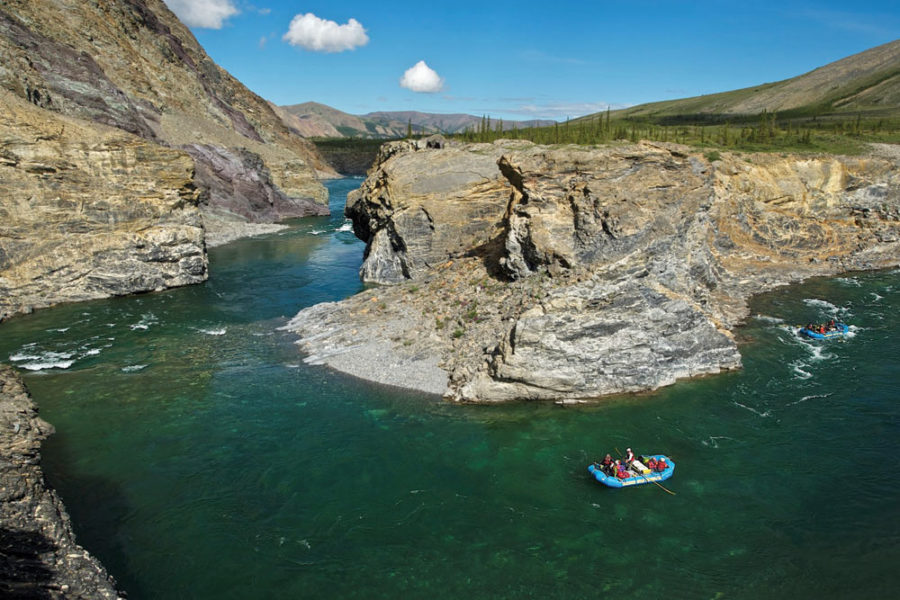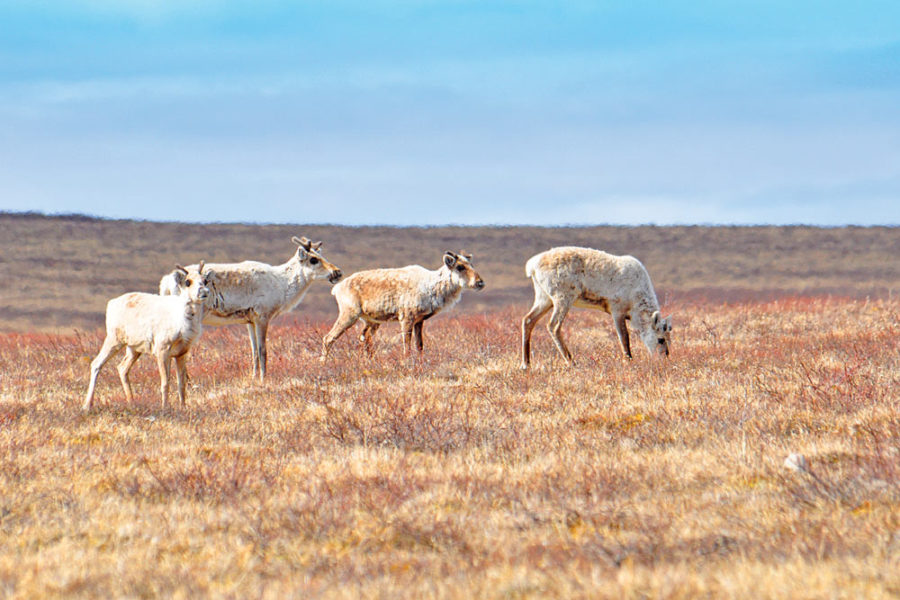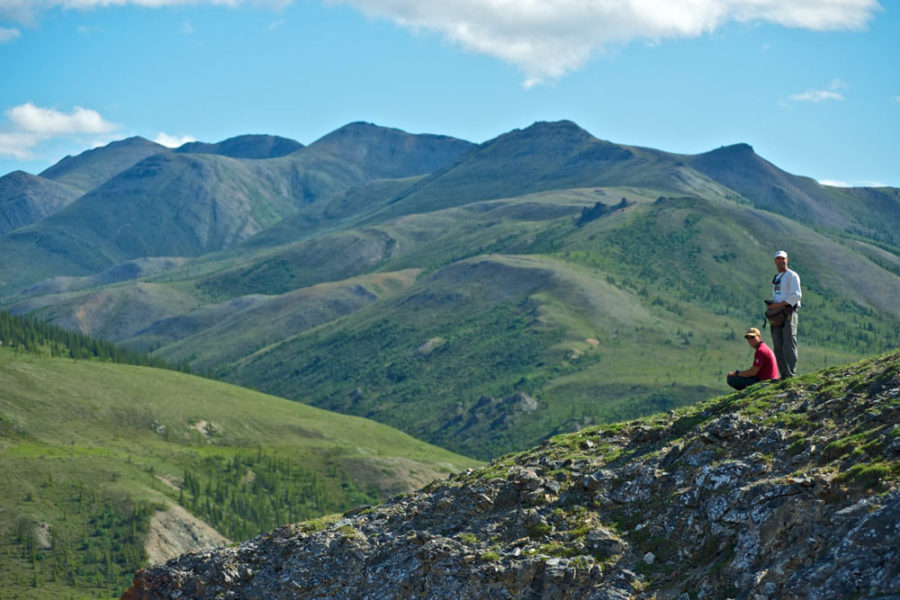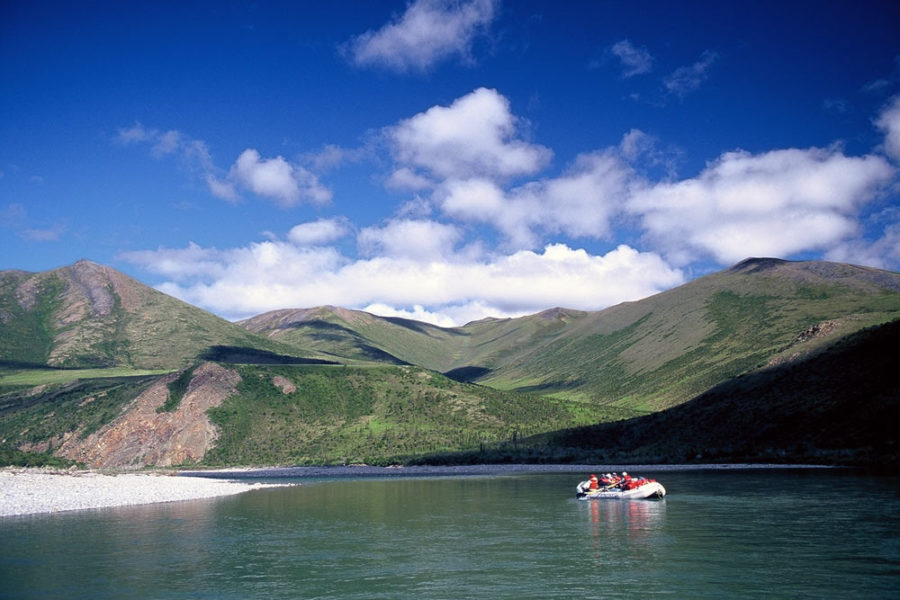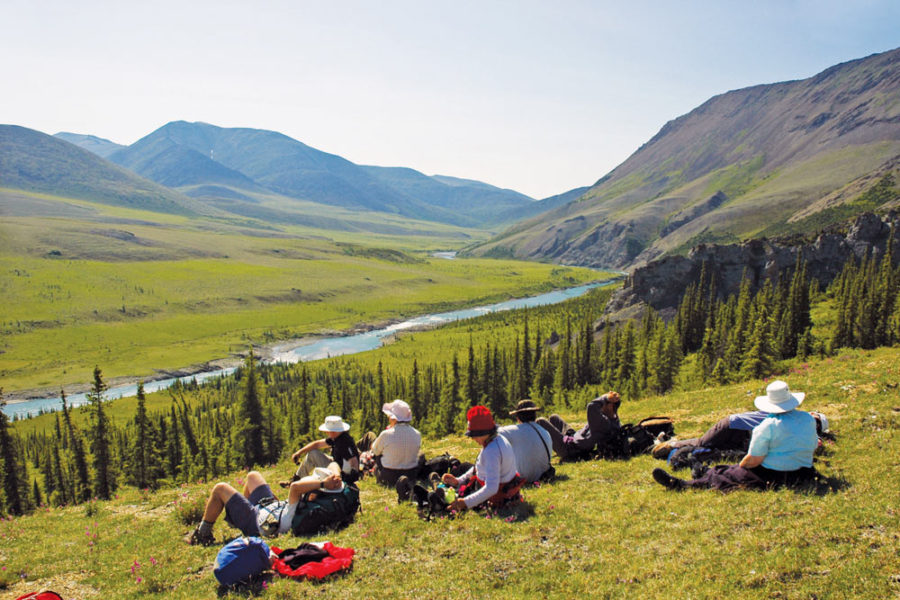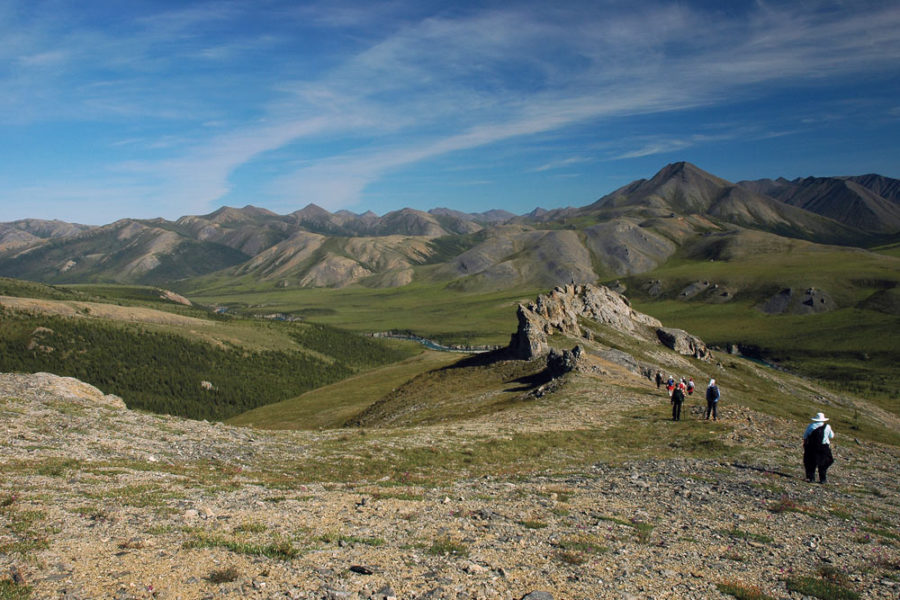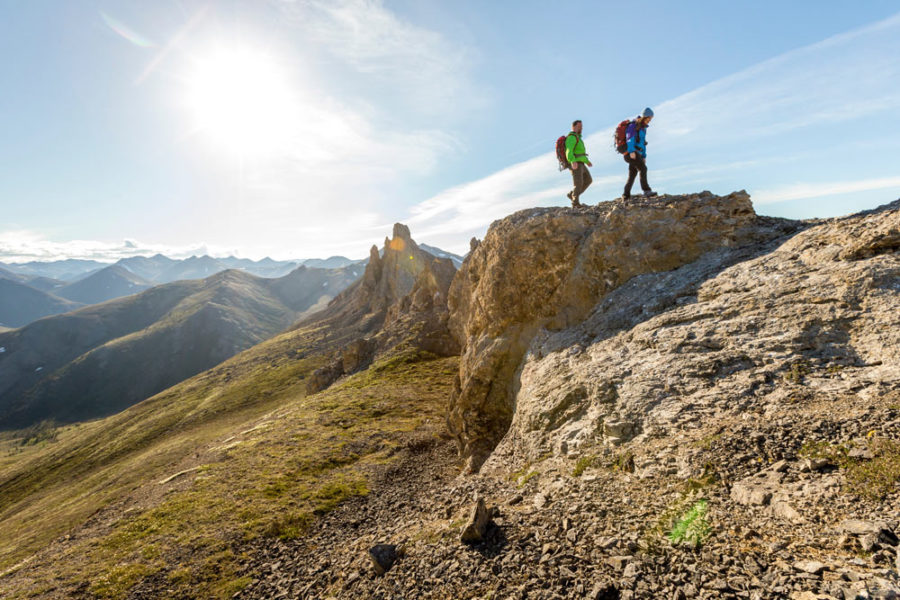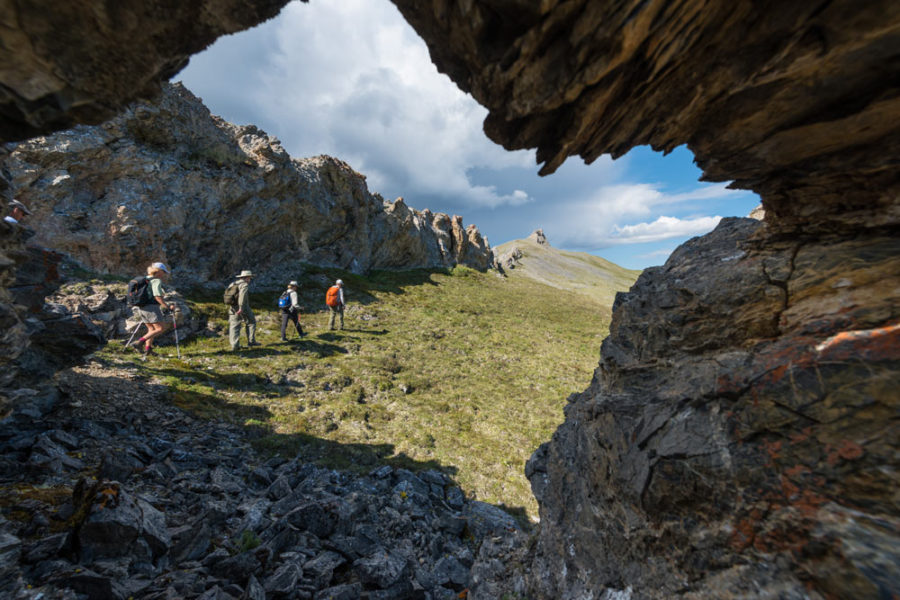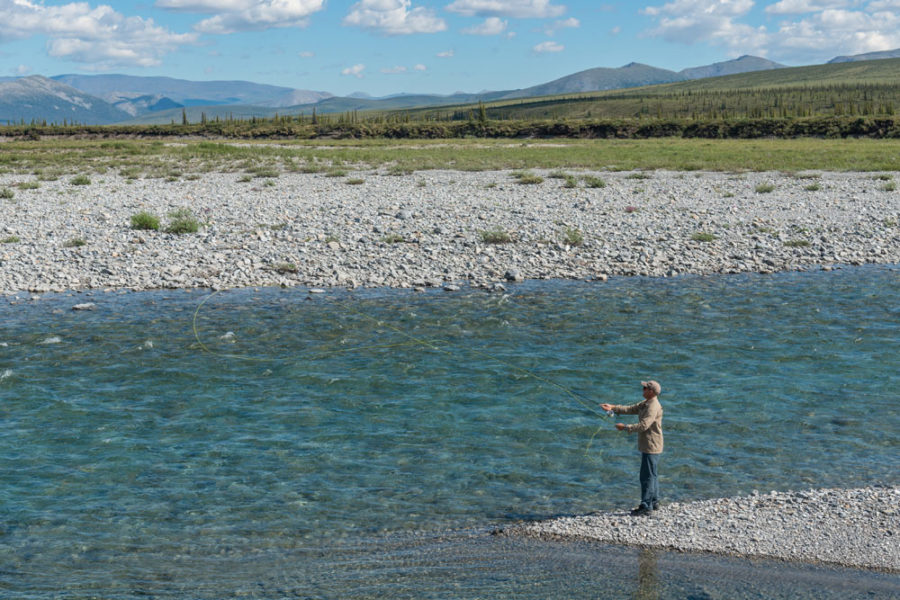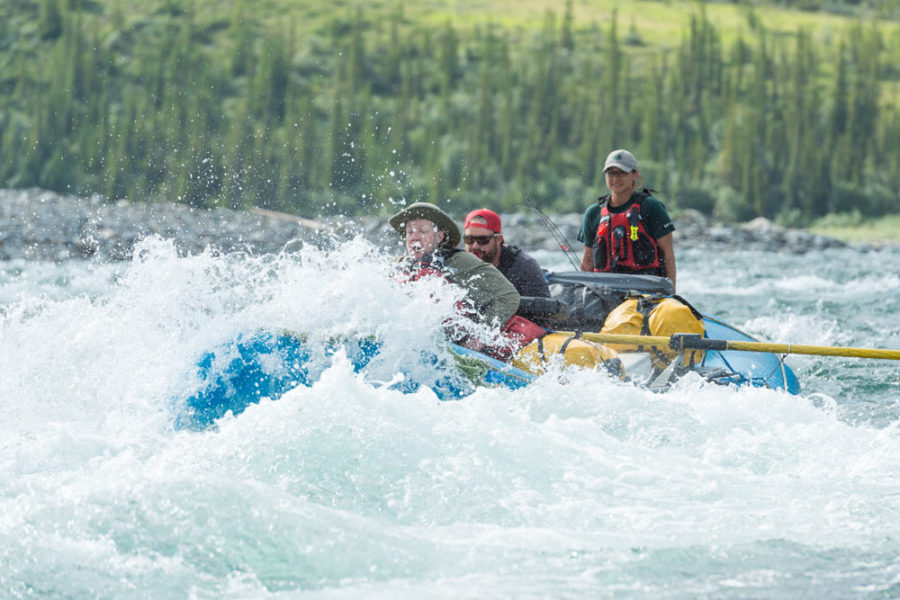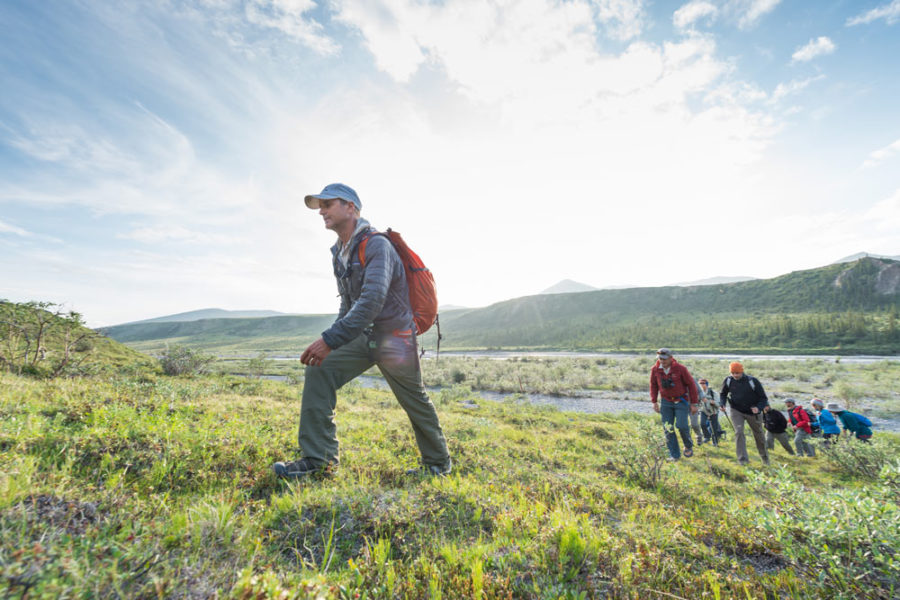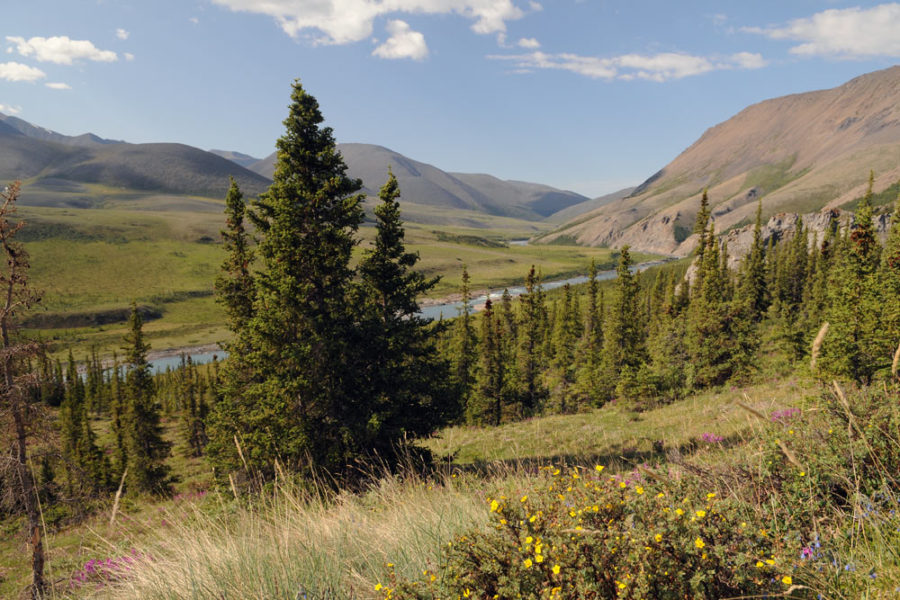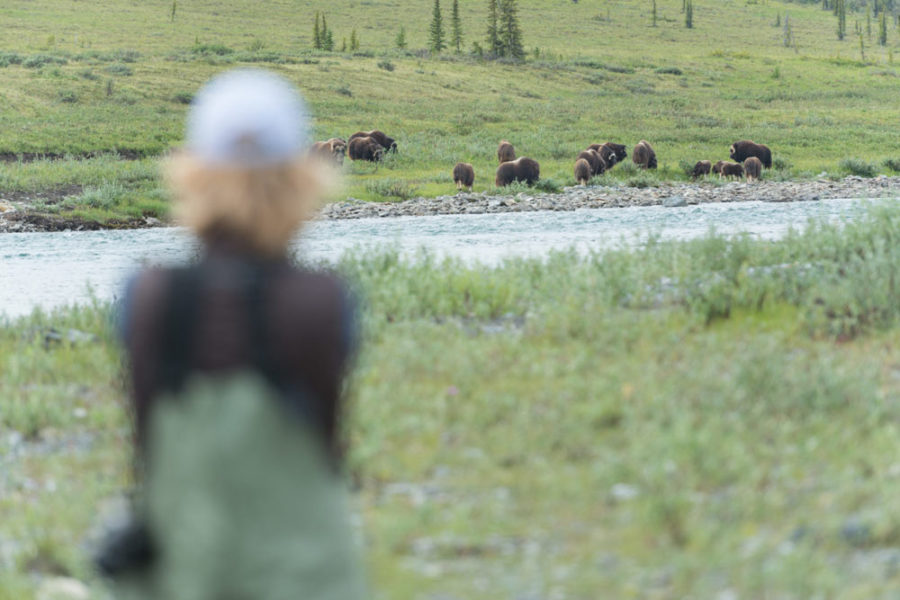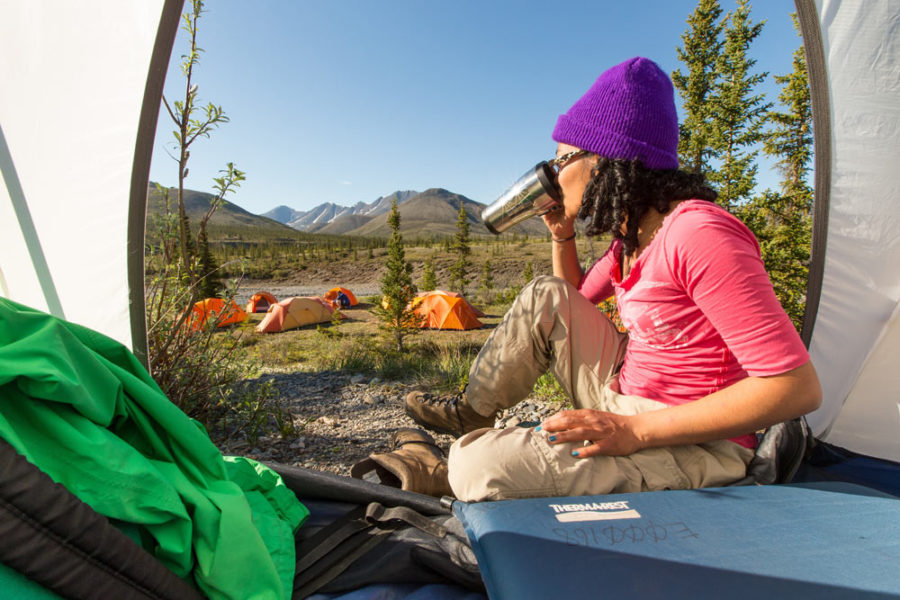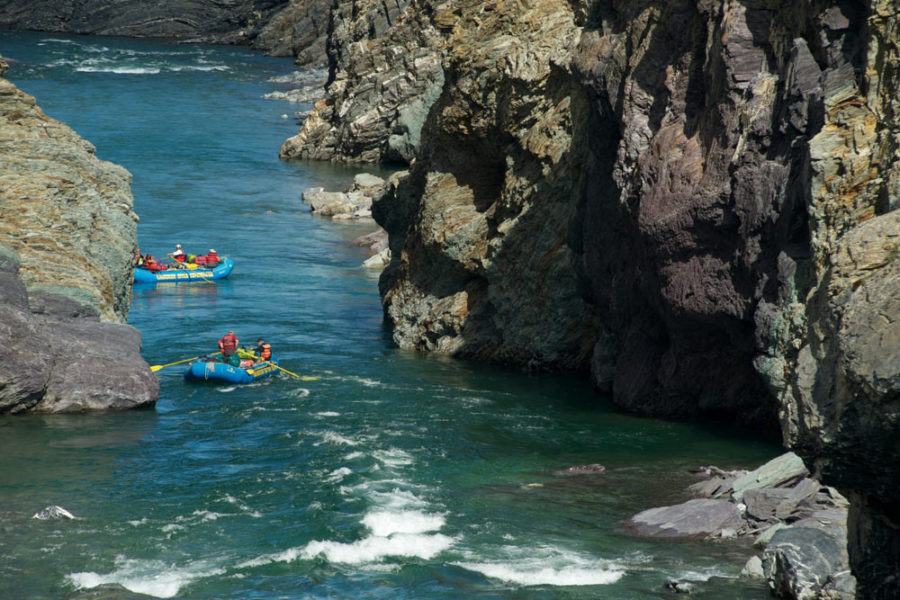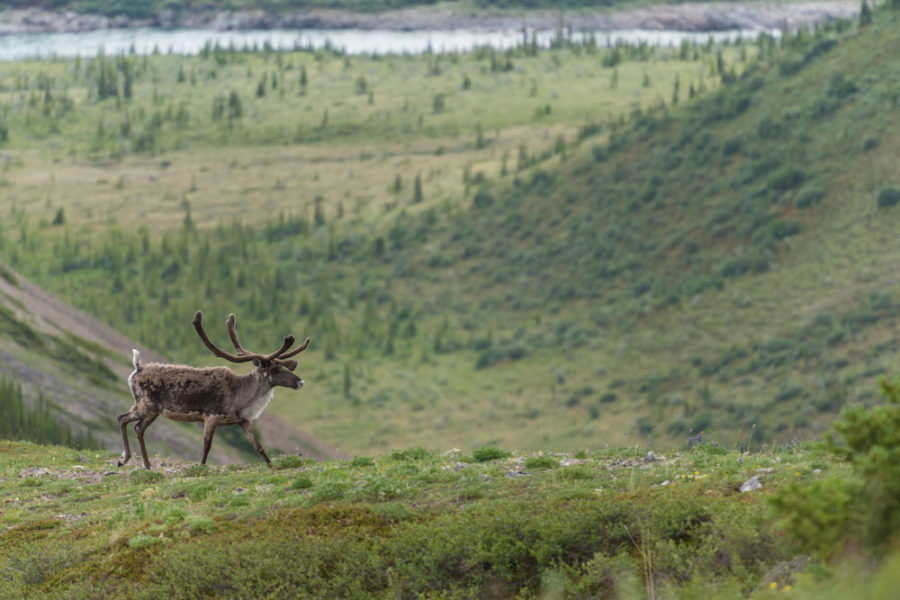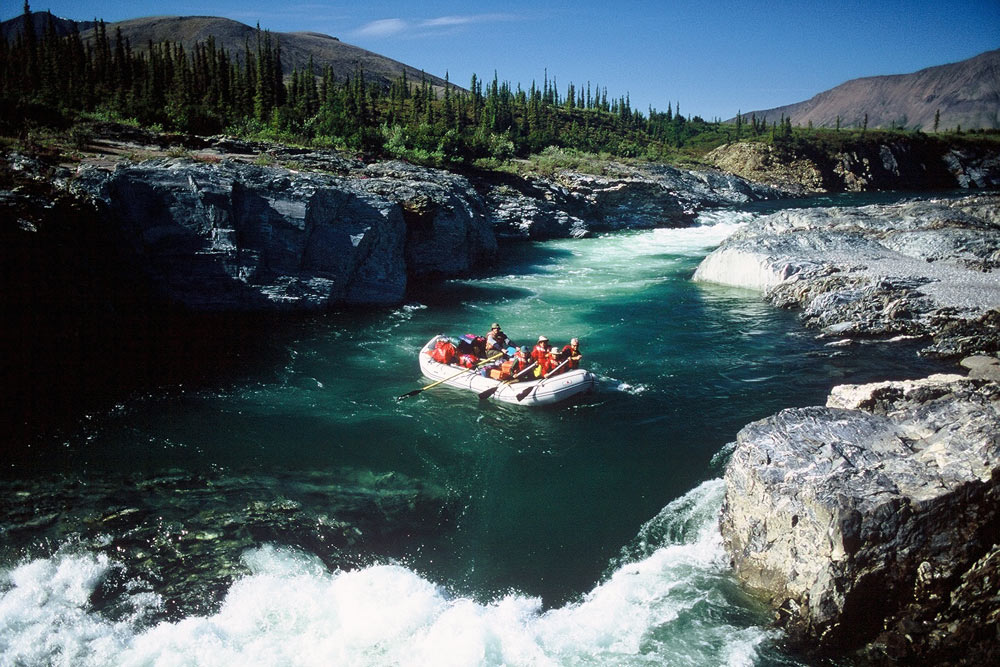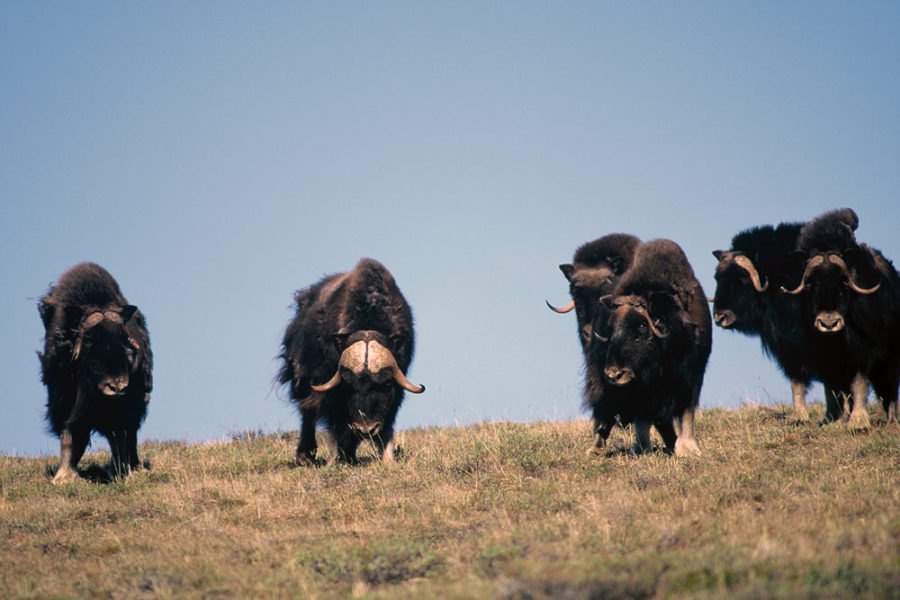Itinerary
DAY 0 – MACKENZIE DELTA RENDEZVOUS
This is the first date listed for your trip.
The trip starts and ends in Inuvik, Northwest Territories. To get there, you fly to Whitehorse, Yukon or Yellowknife, NWT and connect with a flight to Inuvik, NWT in the Mackenzie Delta where this giant river flows into the Beaufort Sea. Trip participants meet the trip leader and guides at the Midnight Sun Complex at 6 p.m., the night before the start of our journey. The Firth is in the Yukon, but Inuvik-in the northwestern corner of the Northwest Territories-is the closet town with a jet-serviced airport.
DAY 1 – MARGARET LAKE
We’ll have some time for last minute errands in Inuvik in case you need to pick up something at the Northern Store or get a National Parks fishing license from Parks Canada. The flight into Ivvavik National Park will leave Inuvik Airport around 10 a.m. We fly in a deHavilland Twin Otter aircraft, the workhorse aircraft of the North. The route takes us over the vast maze of the Mackenzie River Delta; one of the largest in the world, home to nesting swans, ducks and geese. As we reach the mountains we keep our eyes peeled for large mammals – caribou, muskox, moose, bears.
The hour-long flight to the river put-in takes us across north Yukon close to the border with Alaska and the Arctic National Wildlife Refuge (ANWR). Ivvavik was Canada’s first national park created by a land claim. We land near Margaret Lake on “tundra tires.” Guides will set up camp and inflate rafts while you explore your surroundings.
DAY 2 – BRITISH MOUNTAINS
At first, the winding river has a quiet nature. Low banks reveal unobstructed views up the valley and limestone crags rise from the river. Our rafts glide across deep clear pools full of grayling and char. The area is summer habitat for many migrating birds: phalaropes, sandpipers, plovers, jaegers, terns, buntings, longspurs and even robins. Caribou migration trails line the hillsides. Red fox and ptarmigan are common. The open tundra was made for wildlife watching and hiking – we carry a spotting scope to take advantage of viewing opportunities.
DAY 3 – RAPIDS AND RIDGE HIKES
A few days into the journey, you begin to realize how this land has been used by indigenous cultures for thousands of years. Along much of the route, there are ancient signs of human use. The Inuit would leave the coast to travel inland and hunt caribou and moose and fish for char. When we pick a nice campsite – one with good wildlife viewing opportunities or perhaps a great fishing hole – we may find remains of old meat caches and stone rings.
DAY 4 & 5 – ANCIENT MOUNTAINS
Downstream of Joe Creek the river enters a spectacular canyon that continues for 40 km. The landscape transforms as the limestone rock gives way to volcanics, mountains rise and vegetation changes. The middle part of our adventure takes us through the ancient, unglaciated and jagged British Mountains. The Firth winds among these stained, eroding peaks, alternating between quiet pools and exhilarating rapids. In places remnants remain of stone fences built by Inuit hunters to funnel caribou into enclosures.
DAY 6 & 7 – SHEEP CREEK
Just above the confluence of Sheep Creek we run some of the trip’s bigger rapids. Partway through the canyon, we stop to camp. Ridges to the west beckon for hiking, and we take some time to catch up on journaling, photography, and discovering the area’s cultural and natural history.
DAY 8 – CARIBOU & FIRTH CANYON
Wildlife spotting is a non-stop activity as we watch for ten species of raptor, Dall sheep, wolves, bears and caribou. Sometimes we’re fortunate to witness thousands of caribou from the 160,000-strong Porcupine Caribou Herd crossing the river and surrounding our camp. Soon the British Mountains merge into the Buckland Hills. The canyon walls are left behind and the Firth emerges onto the coastal plain.
DAY 9 – ENGIGSTIACK; ANCIENT ANTHROPOLOGY
As the plains spill before us, a rocky knoll known as Engigstiack rises a few hundred yards from the river. Though just one hundred feet high, Engigstiack provides great views over the plain.
We climb this timeless hill, an important archaeological site where hunters have stood for 8,000 years gazing across the tundra.
DAY 10 – MUSKOX HABITAT
We float across the plain to reach a campsite at the head of the Firth delta. Here vegetation is often draped in qiviut, the downy underhair of muskox, and we have a good chance of seeing some of these hairy beasts.
DAY 11 – ARCTIC OCEAN & BEAUFORT SEA
River channels get smaller as we approach the ocean, so we may walk along the flowering tundra in order to lighten the rafts through the shallows. On our last night we camp on the beach of Nunaluk Spit, at the mouth of the Firth River delta. Here we’ll enjoy the first campfire of the trip, thanks to plentiful driftwood. Ocean currents carry nutrient-rich waters along this coast, attracting birds, mammals, whales and other sea life.
DAY 12 – ARCTIC OCEAN FLIGHT
The Twin Otter will pick us up for a flight along the Arctic Ocean and coastal plains, back to Inuvik, where we will gather for a final dinner. Remember to book a hotel room for this night, and plan your flight no earlier than the next morning.
DAY 13 – HOME BOUND
This is the last date listed for your trip.
After goodbyes and a last look around Inuvik, we will head for home with a cargo of fond and spectacular memories.
Please note: The above is a tentative itinerary and has been designed with much thought to capitalize on the most scenic and exciting parts of the river, while making time on other sections. Your guides will adjust the schedule to make the best use of river and weather conditions.
Please ensure that you have a warm winter jacket (think ‘Puffy’) as well as waterproof rain jacket and pants. We rent robust rain gear and rubber boots – more on our ‘Details & Equipment list. Goretex is not a substitute for rain gear on this trip. Lifejackets are supplied.
Meals and pre- and post-trip accommodation in Inuvik are your responsibility – the cost is not included in the trip fee. We have attached a list of Inuvik hotels. Breakfast, lunch, dinner and snacks are included from the Day 1 lunch until the final river meal. Any other meals off the river are your responsibility.

